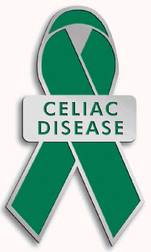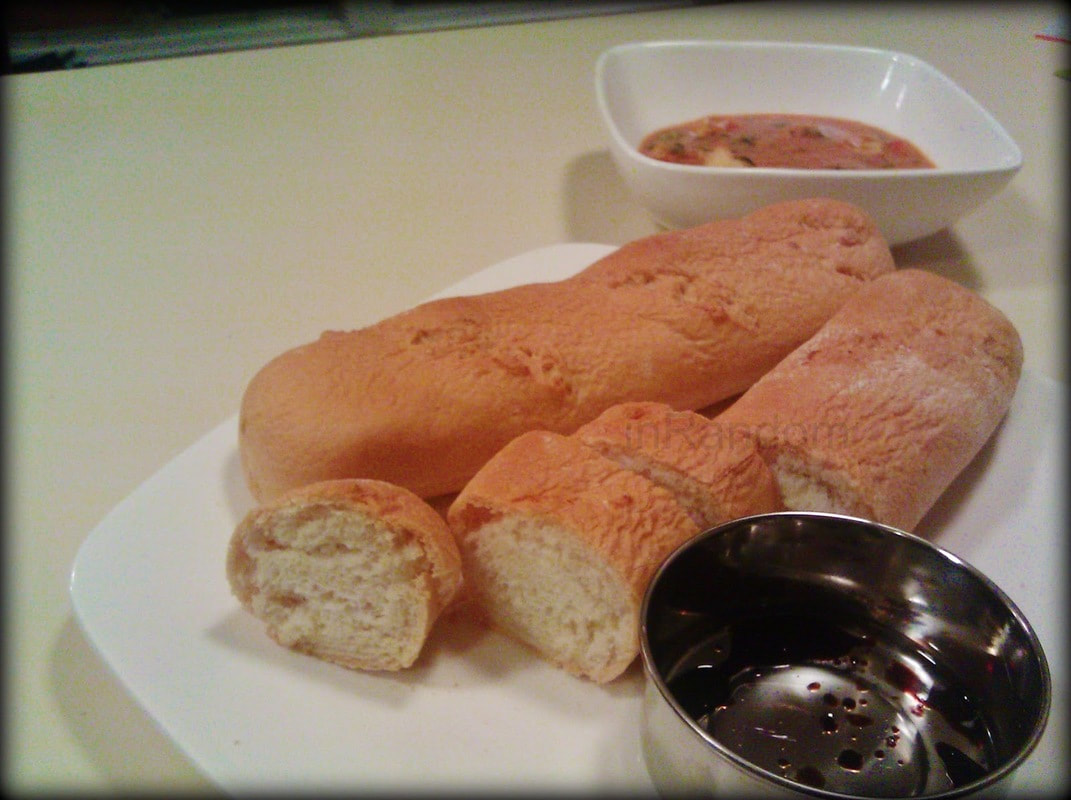|
Sound the trumpets! Chips Ahoy has just launched its first-ever gluten free chocolate chip cookie! This certified GF cookie is a HUGE deal for the company, as it took over 3,000 hours and over 40 different recipes in order to get it just right. "When we set out to create our first Chips Ahoy! Gluten-Free cookie, we didn't want it to be a good gluten-free cookie, we wanted it to be a great cookie that's also gluten-free. I am proud to say that our innovation team has succeeded – the new Chips Ahoy! Gluten-Free cookie is an absolutely delicious cookie that everyone can enjoy." - Jainette Quinones, brand manager of Chips Ahoy. Chips Ahoy has been watching its competition, Oreo, since they launched their first GF cookie in 2021. Three years later, their GF line now has several flavors to choose from. The Chips Ahoy GF cookies are hitting the shelves nationwide as we speak. Target has them in store, and Walmart has them available for shipping. They will arrive at your doorstep in 2 days. In terms of price, they run about the same price as Oreo. Yours truly will be picking them up soon! It's been over 15 years since I've had a Chips Ahoy product! #chipsahoy #glutenfree #celiac #celiacdisease #coeliac #celiacsprue #food #foodie #cookies #GF
 Check your cupboards, fellow Celiac Warriors! The FDA has issued a recall for the Stonewall Kitchen GF Cinnamon Sugar Doughnut Mix. The recall was issued due to concerns about potential wheat contamination. The mix was packaged in a rectangular cardboard box, with a "enjoy by" date of 3/09/2025 and 3/10/2025. You can find these dates at the bottom of the box. Be on the lookout for UPC code 711381313329 and Item Number 553429. If you have this product in your pantry, discard it immediately! Stonewall Kitchen is offering a full refund for those who purchased the recalled item. Here is their contact info: Stonewall Kitchen Premier's Guest Services via email at [email protected], or by phone at: 800-826-1735 (Monday to Friday, 8:00 AM ET to 5:00 PM ET). 
Celiac Disease is an inherited autoimmune disease affecting 1 in every 100 Americans. This condition damages the lining of the small bowel, preventing it from absorbing nutrients from foods.
When an individual with Celiac Disease eats food that contains gluten (wheat, barley, and rye), the immune system has an abnormal reaction to it. This reaction destroys the villi in the small intestine, making it difficult for sufferers to get the nutrients they need to stay healthy. Symptoms of Celiac Disease
Getting a diagnosis Your doctor will gather a medical history and examine you. They will also send you for blood work. If the blood test comes back positive for Celiac Disease, your doctor will recommend a biopsy in order to confirm the diagnosis. These tests for Celiac Disease must be done BEFORE eliminating gluten from your diet. If you have already eliminated gluten from your diet, your doctor may ask you to re-introduce some gluten back into your diet in order to diagnose you properly. Treatment While there is no cure for Celiac Disease, there are ways to manage the disease. The main treatment is a strict gluten free diet for the rest of your life. If Celiac Disease is left untreated, you open yourself up to a ton of complications, including cancer, osteoporosis, infertility, and in extremely rare cases, death. Nowadays, it has become easier for people to manage their Celiac Disease. Many stores throughout the country have entire aisles dedicated to gluten free eating. Still, it is important for you to familiarize yourself with labels. My Story I grew up with a grandmother that had Celiac Disease. She was diagnosed in the 1980s and the disease made her deathly ill. Back then, there was virtually nothing available to her. My grandfather had to drive to another state in order to get grains that she could tolerate. When he brought them back, he would grind them with blenders and mortal and pestles. He did this from the time he retired, until they moved into assisted living. Watching her get worse in health was very difficult. Even my grandfather was showing wear and tear. He had to hire someone to come in and help with my grandmother while he rested. I helped when I could during the summer months. My grandmother died in 2007. A few years after she died, I began feeling very ill. I had severe fatigue, diarrhea, extreme weakness, and I honestly thought I was dying. I went to the doctor, and they did a blood test. The call I got one October afternoon changed my life. The doctor said I tested "very positive" for Celiac disease. A biopsy later on confirmed it, and I started my gluten free journey. After my diagnosis, I remember crying during my first grocery store visit. I spent a few hours in the store because gluten free food was not as widespread as it is now. I read every label in the store, familiarizing myself with ingredients. While things may seem a lot easier for us Celiacs, we still have to be cautious. This is a life-or-death situation for us. This isn't some allergy. This is a real disease, with real complications. I cannot stress this enough, if you suspect that you may have Celiac Disease, DO NOT begin a gluten free diet until you've seen your doctor. You need a proper diagnosis.  After I was diagnosed with Celiac disease, I was unable to have one of my all-time favorite foods: Garlic bread. I thought I would never be able to have garlic bread again. I loved eating garlic bread with a helping of spaghetti and meatballs. Then I discovered Udi's French Baguettes. The Udi's French Baguettes toasted nicely in the oven. It was crispy on the edges, and soft in the middle. As usual, I was pleased with Udi's, for their high quality food items. The French Baguette was amazing. Not only is it great for garlic bread, it is also perfect for dunking in soup. It is hard to find this product, so I would recommend going to your local organic/gluten free shoppes. Sometimes you get lucky and find this item in the chain supermarkets. It is moderately priced, but, it is well worth it. #udisglutenfree #baguettes #gf #glutenfree #glutenfreebread #foodreviews #food #celiacdisease #celiac #coeliacdisease  Do you suspect that you have Celiac Disease? As I sift through various videos on YouTube, I see young people discussing how they suspect they have Celiac disease. They tell their viewers that they are trying gluten free food to see if it will help them. Meanwhile, their doctor schedules them for a biopsy. These young people go to the biopsy, and a week later, they find out they tested negative. The young person goes back to eating regular food. Their symptoms come back. The young person is at a loss, and wonders "what the hell is going on?" The above scenario does happen. Beginning a gluten free diet before a biopsy makes it harder for a doctor to diagnose you with Celiac disease. When someone eats gluten free BEFORE a biopsy, the small intestine begins to heal itself. When a doctor goes in to study the biopsy, he or she will be unable to spot the damage, and he/she will end up misdiagnosing you. It is absolutely imperative that you DO NOT begin a gluten free diet, until your doctor diagnoses you with Celiac disease. If you suspect gluten allergy/intolerance, talk to your doctor. They may end up testing you for Celiac anyways. Therefore, wait to go gluten free until your doctor says you can start eating gluten free. Celiac Disease is not something to mess around with. Complications of Celiac Disease include osteoporosis, infertility, cancer, failure to thrive in children, and in some cases, death. If you suspect you have Celiac Disease, you owe it to your future to get yourself properly tested. Below are some classic symptoms of Celiac Disease. There are over 300 symptoms. During the winter months, people tend to want to eat hot cereals. Many people start eating oatmeal for breakfast. However, when you have Celiac Disease and cannot have oats, oatmeal is off limits. So, what CAN you eat on those cold mornings?
Start off your day with a hot beverage and a comforting bowl of hot cereal. Stay warm out there and be well! Winter will be over soon!  After I was diagnosed with Celiac disease, I wasn't exactly schooled in the non-food aspect of living gluten free. I know that I had to eat gluten free, but to have to use separate appliances and cookware?? That was a whole different ball game for me. It is important to have separate toasters if you are a bagel or English muffin fan. I recommend purchasing a 2-slice toaster. I wouldn't recommend sharing a 4-slice toaster with the non-Celiacs in your household. Even a speck of gluten can make us sick for weeks or even months at a time, not to mention the damage it can do to our small intestine. You must be very careful! Any toaster brand will do. The only thing you have to decide is how much you want to invest in your toaster. Remember, keep your toaster for gluten free breads ONLY. After you purchase your toaster, LABEL IT. #GF #GlutenFree #CeliacDisease #GlutenFreeDiet #CoeliacDisease #CeliacSprue  While great strides have been made in researching and understanding Celiac disease, there are many questions that have been left unanswered. However, one question that can be answered is about the link between Celiac disease and Lymphoma. Scientists measured the risk of Lymphoma in Celiac disease patients by looking for persistent villous atrophy in the patient. It has been shown that patients who have maintained a gluten free diet, even for a year, can still have persistent villous atrophy. This could be due to accidental intake of gluten. The only way to heal from persistent villous atrophy is to maintain a very strict gluten free diet. If left untreated, you put yourself at a higher risk for Lymphoma. Those who have persistent villous atrophy, have a 3.78-fold increase in developing Lymphoma. However, those who are in the process of healing, only have a 1.5-fold increase in developing Lymphoma. The specific type of Lymphoma that we are at risk for is, Non-Hodgkins Lymphoma (a blood cancer). As stated before, a life-long adherence to a gluten free diet, will lower the risks of Lymphoma. (Source: www.celiaccentral.org/researchnews/celiac-disease-lymphoma-researcher-explains-risk-10191/)  There is research suggesting that there is a connection between Celiac Disease and Systemic Lupus Erythematosus (SLE). Systemic Lupus Erythematosus is an incurable auto-immune disease that affects the skin, joints, kidneys, and brain. The body's immune system mistakenly attacks healthy tissue, thus causing the following symptoms in people with SLE:
With both being auto-immune diseases, a person with Celiac Disease has a higher risk for SLE than the normal population. Research is still being conducted, however, those of us with Celiac Disease, should be checked for SLE if we notice any of the above symptoms. If you have autoimmune disease, you know they are just like Pringles: you can never have just one!  Refractory Celiac Disease is defined as one whose symptoms do not improve, even while on a Gluten Free diet. In order to be properly diagnosed as someone who has Refractory Celiac Disease, a few questions must be answered:
If doctors conclude that you do have Refractory Celiac Disease, it is important for doctors to check for complications, such as lymphocytic Colitis, lymphoma, and pancreatic insufficiency. If you have Celiac Disease, and your symptoms have not improved, make an appointment with your Primary Care Physician, or your GI doctor immediately. It is better to be safe than sorry, especially with the increased risk of the above complications. (Source: www.celiac.com/articles/104/1/Refractory-Celiac-Disease/Page1.html) #CeliacDisease #CoeliacDisease #GF #GlutenFree #RefractoryCeliacDisease #AutoimmuneDisease #HealthAndWellness #Health #Blogging #CeliacBloggers |
©2017-2024






 RSS Feed
RSS Feed